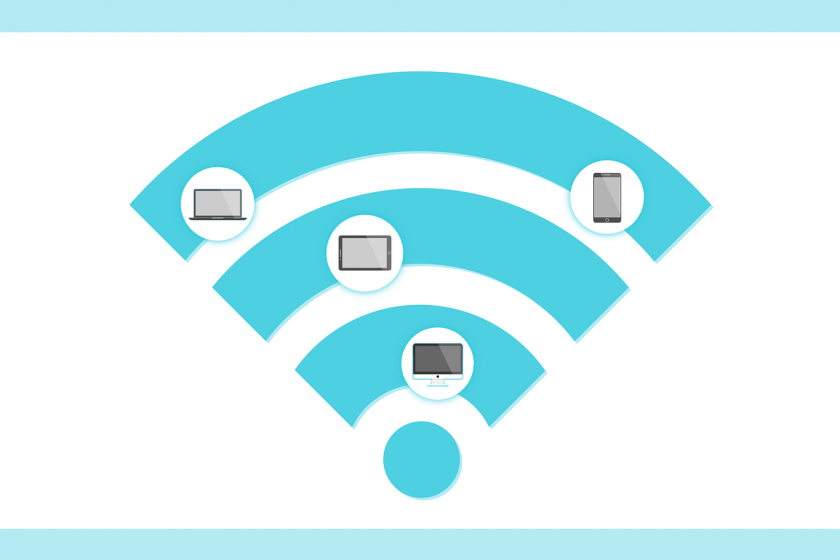Wi-Fi 6 will be critical to the hyper-connected future for enterprises because the technology offers superior speed, can support more devices, and has much lower latency than Wi-Fi 5.
And Wi-Fi 6 is already a proven technology. According to International Data Corp. (IDC), 79% of all Wi-Fi shipments will support Wi-Fi 6 in the next two years, up from half of all shipments in 2021. More than 3.5 billion Wi-Fi 6 devices are expected to be shipped this year.
In its 2021 Study of Advanced Wireless Adoption, consulting firm Deloitte found that global network decision makers regarded Wi-Fi 6 and Wi-Fi 5 as the most critical wireless technologies for their business initiatives. The 2020 version of the report cited 4G/LTE and earlier Wi-Fi technologies as being most critical. No doubt, the next version of the study will focus on Wi-Fi 6, particularly with its advanced capabilities to handle the growing demand for reliable connectivity to take advantage of new and emerging 5G services.
Wi-Fi 6 technology uses orthogonal frequency division multiple access (OFDMA), which supports high-density deployments. This technology offers the bandwidth necessary for multiple users accessing the network simultaneously, helping to reduce the power consumption of devices while also providing high-quality connectivity.
So, anyone buying Wi-Fi 5 devices today should seriously reconsider. Those devices will soon be outdated, with the advantages going to the enterprises that chose the faster, newer Wi-Fi 6, which will support unified communications, cloud computing, augmented and virtual reality, as well as telepresence, all critical capabilities for the forward-looking enterprise of the future.
With the high data rates, low latency, and high network density that Wi-Fi 6 offers, it is ideal for video applications that need high throughput as well as for those needing to support a large number of connected devices. Just a few of the use cases:
- For enterprises, Wi-Fi 6 offers improved connectivity for employees, guests, and visitors as well as to different smart devices within an office, factory, warehouse, or another facility. Wi-Fi 6 is often a more cost-effective approach for deploying Industry 4.0 Smart Manufacturing compared to cellular. The advantages of the technology will spur enterprises to purchase 13.4 million of the devices in 2026, up from 4.3 million in 2021, according to ABI Research.
- According to Deloitte, municipalities are already using a combination of Wi-Fi 6 and Wi-Fi 5 to provide critical communications, including real-time traffic monitoring and to provide personalized alerts to anyone in a pre-defined, geofenced area.
- Similarly, sports stadia have deployed Wi-Fi 6 and Wi-Fi 5 to provide a more immersive experience, enabling tens of thousands of fans in a single location to have access to social sharing, order concessions, have access to the latest statistics, and for a variety of other uses. The installation of Wi-Fi 6 access points and analytics support for the Manchester United Club at Old Trafford will begin later this year and will provide fast, reliable Wi-Fi connectivity for fans while increasing the Club's capability to deliver high-performance, low-latency, and secure digital services, according to a published report.
- Healthcare is using Wi-Fi 6 to provide real-time, remote patient monitoring, telehealth solutions, and remote healthcare procedures using medical robots.
- Connected autos are prime candidates for Wi-Fi 6 connectivity. According to an Ericsson report, the connected car market will exceed $166 billion by 2025. These vehicles will rely on Wi-Fi 6 connectivity for efficient Wi-Fi connectivity throughout the vehicle, with the technology supporting ultra-high definition (ultra-HD) video streaming on multiple displays, screen mirroring from compatible devices, and wireless backup cameras. Beyond those in-vehicle devices, Wi-Fi 6's full MIMO client capability offers high data rates at extended ranges, essential for connecting to external access points for critical automotive services, including vehicle diagnostics, software updates, and automatic check-ins at dealerships.
The trend toward Wi-Fi 6 is clear. To optimize Wi-Fi 6 performance, enterprises, municipalities, and others will want to use industrial-grade modules designed to deliver faster, more secure, and more robust Wi-Fi experiences as well as new Bluetooth audio capabilities. The modules should be designed to provide enhanced performance in capacity, data rates, latency, power consumption, and coverage. They bring premium wireless performance to a variety of consumer, industrial and automotive applications, such as smart homes, smart TVs, over-the-top (OTT) devices, industrial controls, and customer premises equipment (CPE).
Dominikus Hierl is SVP of Sales for EMEA at Quectel.
Related articles:









